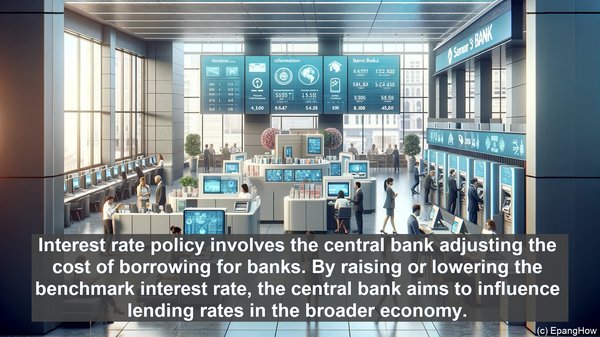Introduction: The Levers of Monetary Policy
Greetings, everyone! When it comes to managing an economy, central banks have an array of tools at their disposal. Among these, interest rate policy and quantitative easing stand out. In this article, we’ll dissect the differences between these two strategies, exploring their mechanisms and implications.
Interest Rate Policy: The Traditional Approach
Interest rate policy involves the central bank adjusting the cost of borrowing for banks. By raising or lowering the benchmark interest rate, the central bank aims to influence lending rates in the broader economy. When the central bank raises rates, borrowing becomes costlier, which can curb inflationary pressures. Conversely, lowering rates can stimulate borrowing and spending, thus boosting economic activity.
Quantitative Easing: Expanding the Central Bank’s Balance Sheet
Quantitative easing, often referred to as QE, is a more unconventional strategy. Here, the central bank purchases long-term government bonds or other securities from the market. By doing so, it injects money into the financial system, aiming to lower long-term interest rates and encourage lending. Additionally, QE can provide liquidity during times of financial stress, as witnessed during the 2008 global financial crisis.

Diverse Objectives, Diverse Impacts
While both interest rate policy and quantitative easing can influence borrowing costs, they have distinct effects. Interest rate policy primarily impacts short-term rates, such as those for mortgages and credit cards. On the other hand, quantitative easing has a more pronounced effect on long-term rates, like those for business loans and mortgages with longer tenures.
Navigating Economic Challenges: The Dual Role
In times of economic downturn, central banks often employ both strategies. When interest rates are already low, as was the case during the 2008 crisis, conventional interest rate policy may have limited room for further reduction. In such scenarios, quantitative easing can provide an additional tool to stimulate the economy, as witnessed in subsequent years.
Potential Risks and Limitations
While interest rate policy and quantitative easing can be effective, they are not without risks. Lowering rates excessively can lead to asset price bubbles, as witnessed in the housing market prior to the 2008 crisis. Similarly, the large-scale asset purchases associated with quantitative easing can raise concerns about inflation and the central bank’s balance sheet. Thus, a balanced approach is crucial.

